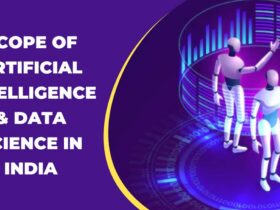Research shows that alcohol caused 10% of deaths among 15 to 49-year-olds. They involve themselves in activities that are harmful to their health like the consumption of alcohol and drugs. Due to insufficient verification, the child can easily access age-restricted content and services over the internet. It simply requires the minors to check the box to verify that their age is 18 or above. With the ease of access to the internet, kids have found numerous ways to bypass the inefficient online manual age verification process. Financial and non-financial organizations are adopting the state of the art online age verification solutions to get rid of manual age verification checks and comply with KYC/AML regulations.
What is Electronic age Verification?
Electronic age verification is a process to prevent underage minors or kids from gaining the access to age-restricted products or services. It uses hybrid human and artificial intelligence technology to verify the right customer in real-time through facial recognition and ID document verification techniques. Research shows that 72% of individuals between the age of 18 and 29 play video games. Minors, These games are based on the last man standing strategy. The player wins the game by murdering other players by means of gun violence. This violence is not only causing severe damage to the minor’s mental health but also making him socially unstable.
To manage this behavior among minors there is a need to adopt an effective and dynamic approach. Occasionally used methods for managing these risks are rehabilitation centers, setting of the date of birth or age verification checks, parental controls, and alcohol education at schools or colleges. Parents and Online merchants selling age prohibited products are the major entities that can play an important role to prevent this abuse among minors. Online merchants can make a difference by complying with KYC and AML regulations and parents can reduce the threat by taking care of their children.
Businesses that need Electronic age Verification?
To prevent minors from the access of age-restricted services and products businesses need to comply with KYC and AML regulations to verify that the eligible customer is using their services.
Gaming and Gambling Platforms
Research shows that 60-80% of 13-17-year-old teenagers in the UK, USA, and Canada have gambled for at least one time in a year. According to the UK Gambling Act 2005, the promotion of age-restricted products among minors (below the age of 18) is illegal. The gambling laws are implemented for online betting, lotteries, gaming, and gambling websites. for preventing the minor’s access to these platforms businesses need to adopt seamless age verification procedures. The required age for accessing age-restricted content is 18 or above. Artificial intelligence-based facial and ID document verification checks can help businesses to confirm that the user is below or above 18.
Online drug and Alcohol Selling
Research shows that alcohol caused 13.5 percent of deaths among 20 to 39-year individuals. In various countries, the legal age limit for alcohol consumption is 18 except in North America where the age limit is between 18 and 20. In the United States, selling alcohol for 21 years is illegal as per the underage drinking rules of the United States. If a business fails to observe these regulations, high monetary penalties are imposed. Online age verification is the all-in-one solution for businesses to fulfill their legal requirements and restrict minors from accessing the age prohibited services.
What are the trends in Electronic Age Verification in 2021?
NFC Verification
Research shows that 72 percent of internet users will use smartphones to access the web. Keeping in view the usage of smartphones it is easier for businesses to verify their customers with NFC-enabled smartphones and government-issued ID documents. Through chip-based ID document verification, eliminates identity fraud and helps businesses comply with KYC and AML regulations.
Facial Biometric Verification
The state-of-the-art facial biometric verification solution uses machine learning and liveness detection methods to capture precise biometric data for matching. It helps businesses deter the risks of identity fraud in real-time by utilizing anti-spoofing measures.







Leave a Reply